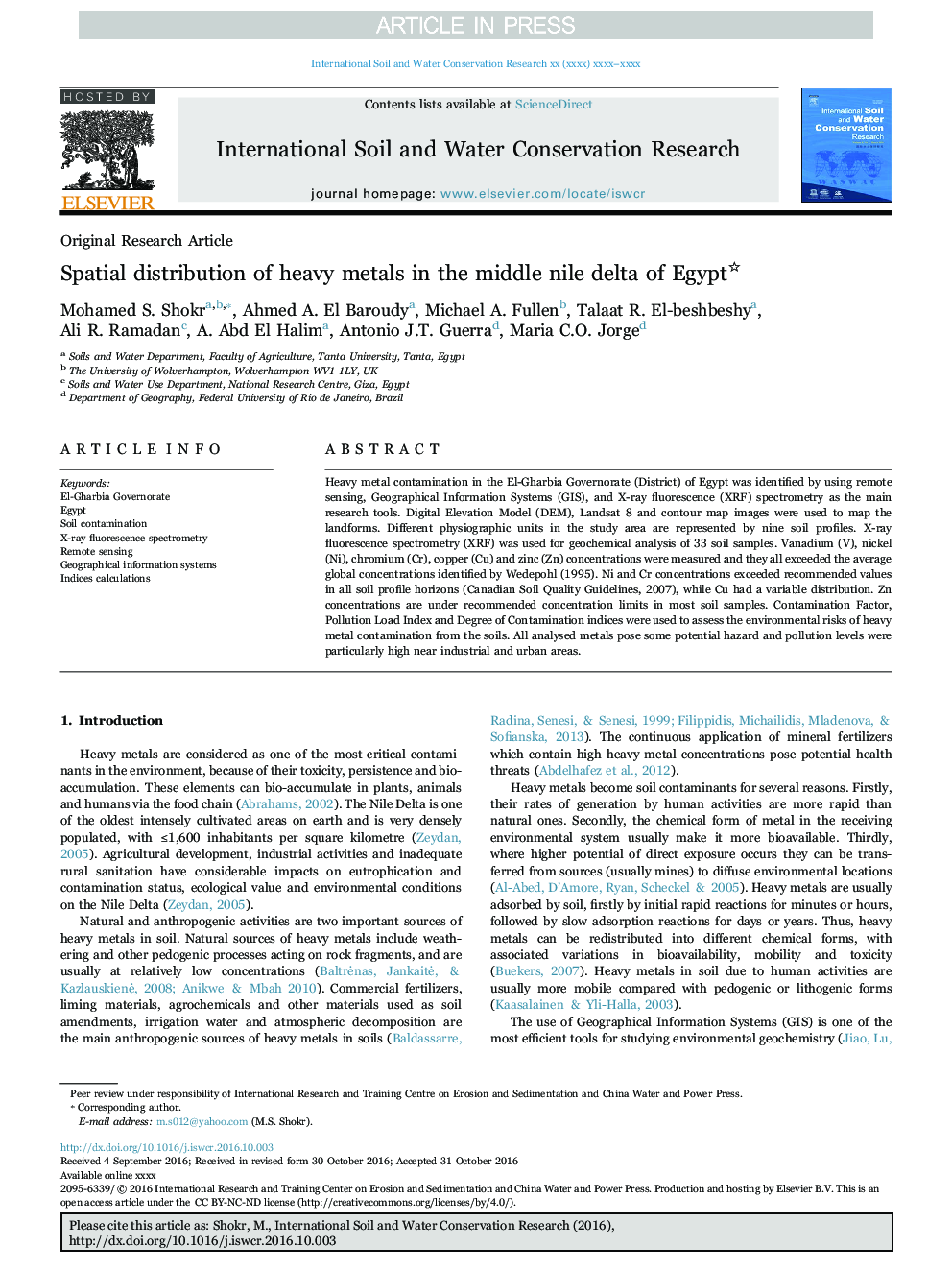| Article ID | Journal | Published Year | Pages | File Type |
|---|---|---|---|---|
| 8865186 | International Soil and Water Conservation Research | 2016 | 11 Pages |
Abstract
Heavy metal contamination in the El-Gharbia Governorate (District) of Egypt was identified by using remote sensing, Geographical Information Systems (GIS), and X-ray fluorescence (XRF) spectrometry as the main research tools. Digital Elevation Model (DEM), Landsat 8 and contour map images were used to map the landforms. Different physiographic units in the study area are represented by nine soil profiles. X-ray fluorescence spectrometry (XRF) was used for geochemical analysis of 33 soil samples. Vanadium (V), nickel (Ni), chromium (Cr), copper (Cu) and zinc (Zn) concentrations were measured and they all exceeded the average global concentrations identified by Wedepohl (1995). Ni and Cr concentrations exceeded recommended values in all soil profile horizons (Canadian Soil Quality Guidelines, 2007), while Cu had a variable distribution. Zn concentrations are under recommended concentration limits in most soil samples. Contamination Factor, Pollution Load Index and Degree of Contamination indices were used to assess the environmental risks of heavy metal contamination from the soils. All analysed metals pose some potential hazard and pollution levels were particularly high near industrial and urban areas.
Keywords
Related Topics
Physical Sciences and Engineering
Earth and Planetary Sciences
Earth-Surface Processes
Authors
Mohamed S. Shokr, Ahmed A. El Baroudy, Michael A. Fullen, Talaat R. El-beshbeshy, Ali R. Ramadan, A. Abd El Halim, Antonio J.T. Guerra, Maria C.O. Jorge,
